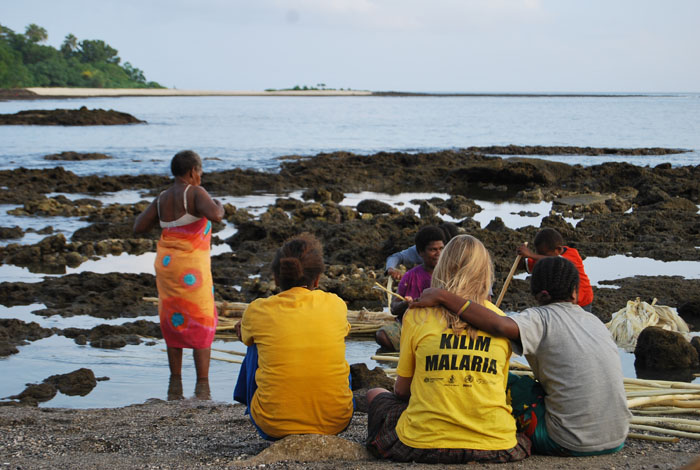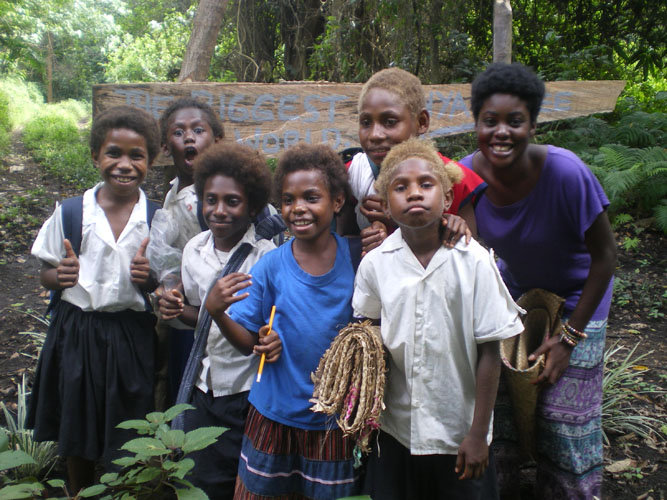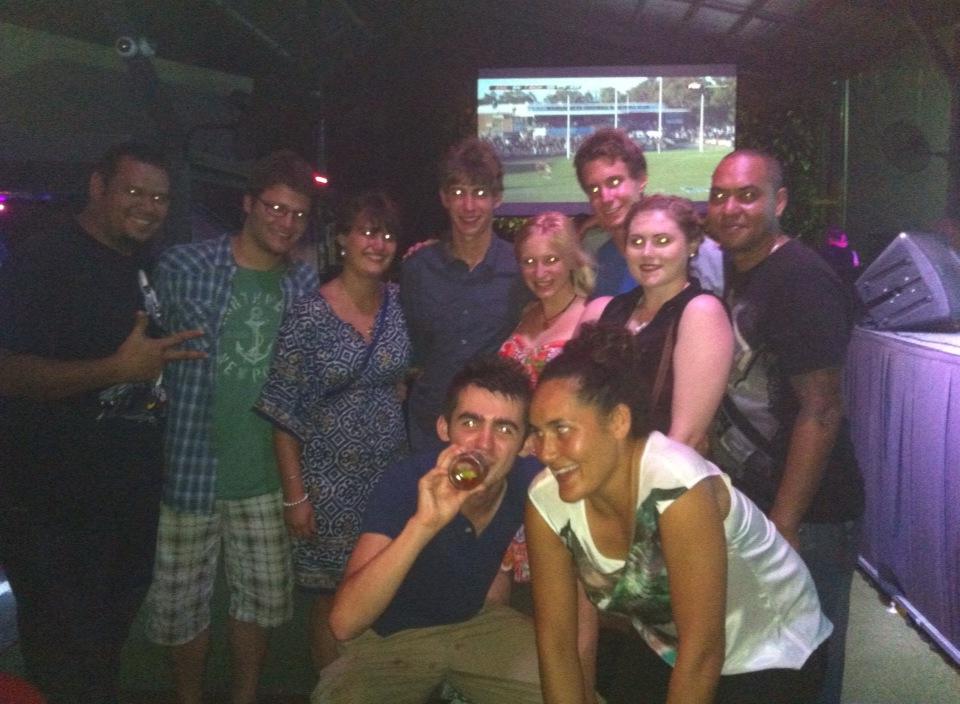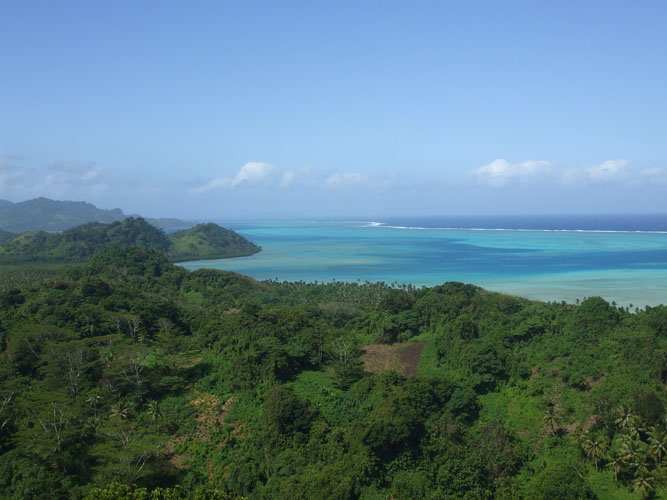It’s been like 2 weeks now since I last up-dated my blog and what a mad couple of weeks it’s been!
The first week started off quite rocky here at Djarragun, which lead to us volunteers temporary being took off doing ‘Club & Culture’, to much disappointment by us all  So it left us with just doing our usual Day shifts and then just Boarding as well, which made the day quite long, especially for those who had boarding the most. We can’t really discuss the reasons behind why we was took off ‘Club & Culture’ temporary, due to confidentiality. But it did have quite a big impact on the week and made it quite slow and a bit boring at times, but we pulled through it
So it left us with just doing our usual Day shifts and then just Boarding as well, which made the day quite long, especially for those who had boarding the most. We can’t really discuss the reasons behind why we was took off ‘Club & Culture’ temporary, due to confidentiality. But it did have quite a big impact on the week and made it quite slow and a bit boring at times, but we pulled through it 
The end of the week was the first weekend we finally had a car! So this meant; no more having to get the bus into Cairns to do our shopping and having to catch the bus back with out shopping *HURRAY!*, we didn’t have to get the last bus back at 9pm *HURRAY AGAIN!* AND MOST OF ALL *drum roll please!* WE COULD VISIT PLACES AND NOT HAVE TO STAY IN  *HURRAYYYY*. Sorry got a bit carried away there, but we were all really excited about this
*HURRAYYYY*. Sorry got a bit carried away there, but we were all really excited about this  So Saturday consisted of us meeting a few of the teachers from the school were volunteering at and watching a live band (who should have a record deal!) Some people went home at about 10:30pm, whilst me and Sarah stayed out with some of the teachers (mainly Michael as the rest started going home one by one) until 5:30pm! We met so many people out during the night and it was so great how friendly everyone was here in Australia, like their was no violence or nothing
So Saturday consisted of us meeting a few of the teachers from the school were volunteering at and watching a live band (who should have a record deal!) Some people went home at about 10:30pm, whilst me and Sarah stayed out with some of the teachers (mainly Michael as the rest started going home one by one) until 5:30pm! We met so many people out during the night and it was so great how friendly everyone was here in Australia, like their was no violence or nothing  We made so many friends for the night who looked after us (something you wouldn’t get back in England), some even let me try their Caps on for half hour or so, which was pretty cool!
We made so many friends for the night who looked after us (something you wouldn’t get back in England), some even let me try their Caps on for half hour or so, which was pretty cool!

Having a really good time here in Australia 

Enjoying a well deserved drink with some teachers from Djarragun!
Sunday came and I used the day to chill out and catch up on some sleep and to catch up with family and friends back home! It was great speaking to friends and family about my time here so far and also to see what they’ve been up to 
Then the week of work started again! Monday I was supposed to be on Admin, however, they didn’t have anything for me to do there, so I ended up spending the day in Middle School and Primary School, helping out where needed. I spent the first bit of time in Middle School, assisting with a teacher to make sure the students were paying attention and doing their work properly. Then came along our usual time in PRIMARY SCHOOL! My favorite part of the day, I really feel that I’m starting to get the students and each of their personalities in Primary and I think I nearly know all of their names (well the Prep and Year 1′s). We also found out the good news that we were now allowed to do CLUB & CULTURE again  *WOO*
*WOO*
Tuesday came and was my turn for Club and Culture and Boarding  In club and culture, i went to help out with cooking, which turned into the students looking for recipes that they wanted to cook the following day, and me helping out the Hospitality teacher (Peggy) mark some student’s work. Peggy is great, she really enjoys having us volunteers here
In club and culture, i went to help out with cooking, which turned into the students looking for recipes that they wanted to cook the following day, and me helping out the Hospitality teacher (Peggy) mark some student’s work. Peggy is great, she really enjoys having us volunteers here  Then came Boarding, which was pretty good, the first half hour or so, we spent just watching TV with a few students (surprisingly a Christmas film at this time of year! CRAZY!) … We then had to set up the Boarders bed sheets for them to make their beds, before dishing their ‘Supper’ out, which consisted of Milk and Biscuits, which they always fight over, trying to get more, but it’s quite a laugh
Then came Boarding, which was pretty good, the first half hour or so, we spent just watching TV with a few students (surprisingly a Christmas film at this time of year! CRAZY!) … We then had to set up the Boarders bed sheets for them to make their beds, before dishing their ‘Supper’ out, which consisted of Milk and Biscuits, which they always fight over, trying to get more, but it’s quite a laugh  Then came cleaning up the cups, any spilt milk and changing the bins, before hitting home.
Then came cleaning up the cups, any spilt milk and changing the bins, before hitting home.
Wednesday I was on day shift, which mean me spending the day with the Prep and Year 1 students, helping with groups who were doing independent work. Then came the afternoon, with them going to the library and us reading books to them of their choice, which is great! You end up with several different kids trying to push different books in your face to read. Then after they moved onto music, where they sing a couple of songs the same each week, play music related games and gain some music based knowledge. They always seem really hyper in music, just wanting to jump/ dance all over the place, which is quite fun trying to keep them focused. The day ended with us couple of volunteers helping take the students to their buses.
Thursday and again I was on day shift, where I spent the day working with the Prep and Year 1 students (as you can tell I really enjoy working with these Years the most, as you can make a fool out of yourself, but still get them to listen at the same time and they always seem to enjoy themselves). In the afternoon came time for ART with these years, watching them paint some pictures can be quite fun, but some of them are pretty artistic already! They focus on a famous artist each week and have to use each artists work to inspire their own 
Friday, yet again I was on day shift and again I spent it working with the Prep and Year 1 students, making sure they were focused on their work. I mainly worked with one particular student ‘Aquila’, who’s finding it hard settling into the school currently. Trying to get him to focus on the work, to sit properly and to join in with everyone else was a slight struggle at first and you’d have to tell him a couple of times initially before he’d listen. However, because I’d be firm with him, but yet slightly have a laugh with him he listened when I told him to sit properly or to do his work and he actually completed all his work  However, I can’t take all the credit for how well behaved he was as another volunteer (Sarah) was also working with him at times too. His teachers were shocked at how well he had behaved for us two volunteers, which was great!
However, I can’t take all the credit for how well behaved he was as another volunteer (Sarah) was also working with him at times too. His teachers were shocked at how well he had behaved for us two volunteers, which was great!  They also had ‘Values’ in the afternoon, where they have a different value each week to learn about, this weeks was ‘Reliability’. I think its great teaching these young children about such values as when they really know what they mean, they can hopefully implement these to the rest of their lives, making them become good citizens within society and also good students.
They also had ‘Values’ in the afternoon, where they have a different value each week to learn about, this weeks was ‘Reliability’. I think its great teaching these young children about such values as when they really know what they mean, they can hopefully implement these to the rest of their lives, making them become good citizens within society and also good students.
The weekend was here and Saturday saw us going off to Kuranda, a nearby Rain-forest area with a few shops and also a walkway viewing area. This gave us a great opportunity to snap up some great pictures! The little market area we visited was mainly for tourists/ visitors, as they markets were mainly selling items for those type of people. The rain-forest walk was great, it consisted of lots of wooden twisted walkways going through part of an area, with information signs along the way, giving you information about the are, which was quite interesting. We then at the end of the walkway was able to see the great view of Baron Gorge/ Falls! The sights you can see along the walkway were amazing, you can write all about them, but only when you’ve really been there can you actually appreciate the area and be captivated by what there is to see/ hear. Some might think ‘oh it’s just tree’s', but when your there, you really can admire that they aren’t just tree’s.
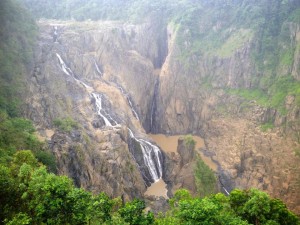
The great view of Barron Falls, just before it started to rain!


Our trip to Kuranda! 
Sunday started with a trip to the local fruit and vegetable market, which is a lot lot cheaper than buying these from the local supermarkets! We were over and done with after about half an hour, so we soon made our way back home. Then a few of us decided to go out for a couple of hours, where we visited a local river called ‘Little Mulgrave River’ and some of us went for a little swim in the river which was quite fun! You couldn’t really swim in the water though as it was pretty shallow and the current just takes you, but luckily as it’s shallow you can easily touch the floor and remain safe! I then found a little rope string and thought of the great idea of trying to swing on it above the water, which was quite entertaining for the other volunteers watching haha!
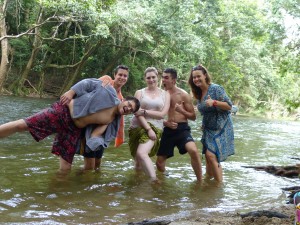
Picture of us Volunteers who went to the Little Mulgrave River! 
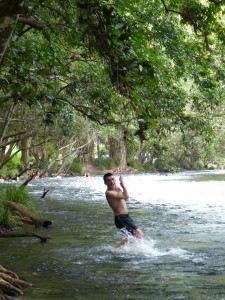
Making a splash in the Little Mulgrave River 

Swinging on rope in the Little Mulgrave River! 
After the Mulgrave River, we decided to try and find some nearby Waterfalls or other little Creeks (which didn’t have any crocs in) … but it didn’t quite work out as planned and we ended up driving around a hillside with sparsely spaced out self built houses with some great little views. We ended up going up and down streets, finding out at the end some of them were dead ends haha!

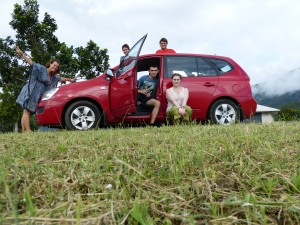
On top of a hill, in an empty space! 
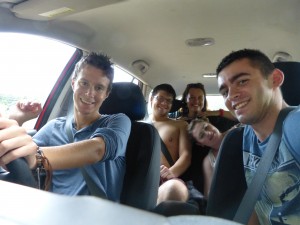
Driving to find some random but cool places! 


